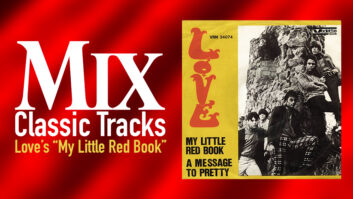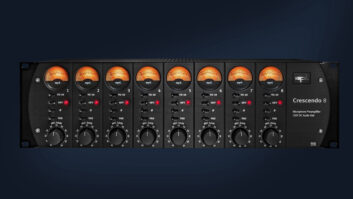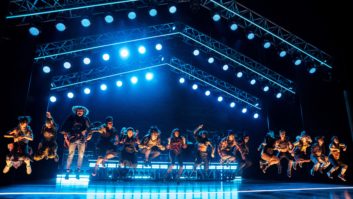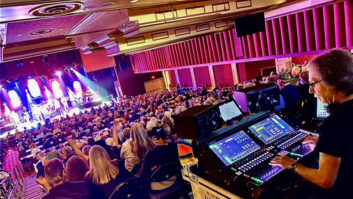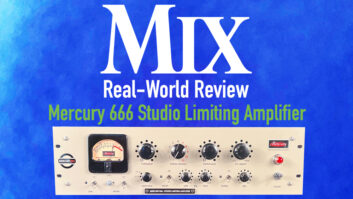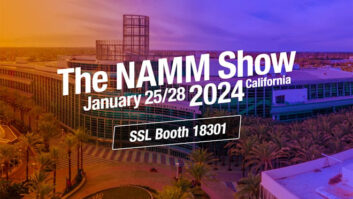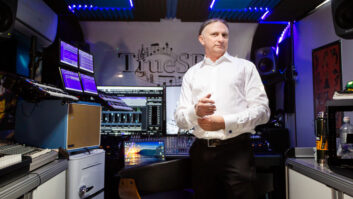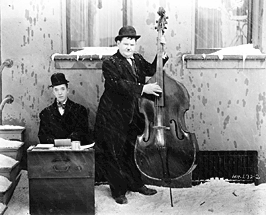
“Good Old Days,” “Dash and Dot,” “On to the Show,” “Bells.” Nearly every person on the planet knows these songs, though most don’t know their names or who wrote them. They’re those wonderful music cues found in Hal Roach comedy shorts from the early 1930s by Our Gang, Laurel & Hardy and others. And anyone who has any of the Beau Hunks’ rare CDs containing their fascinating re-creations of this music in their collections no doubt considers themselves lucky.
“This music evokes a sense of nostalgia for bygone days and better times that may have never existed,” says Dutch researcher Piet Schreuders, who, together with co-producer Gert-Jan Blom, were the masterminds behind the recordings made in the early ’90s. The tunes were first released in America on Koch Screen under the title The Beau Hunks Play the Original Little Rascals Music. “We’ve met so many people who grew up in the ’50s and ’60s, who were exposed to Laurel & Hardy and Little Rascals on television, loved this music, couldn’t find it and had been looking for it all their lives.”
The music cues grew out of an attempt to alleviate the side effects of Western Electric’s early so-called “Noiseless Recording,” which, in the late ’20s and early ’30s, was anything but. “In the early talkies, music was literally used as noise reduction,” explains Blom. “When there was no dialog, it sounded like there was a blizzard going on all the time.”
Roach’s solution was to hire composer Leroy Shield to create music cues to play throughout his films, often heard playing constantly through each short. “Roach hired him to compose a huge amount of music for all the shorts, as well as some features, that came out of Roach’s studio,” says Blom. “Shield was a craftsman that could just spit out any number of tunes per day. If Roach said, ‘I need a police theme,’ Shield could provide — even very short cues of just three or four seconds.”
Once a number of cues — as many as 50 or more — had been recorded after Shield scored five or six films, film editor Richard Currier (and his successors) spotted the films, using Shield’s effects and themed cues from previous films. “The selection was often text-driven based on the cues’ titles: ‘Beautiful Lady’ for a scene with a lady, ‘Gangway Charley’ for a Charley Chase scene, ‘Oh Doctor’ for painful scenes,” Schreuders explains. Such film-loop recordings, Schreuders suggests, may have been played back on a device similar to a jukebox in arrangement, which would pull up the required recording at the correct moment in the film. Later, cue sheets that listed the cues, their composers and timings in the order used in the films were prepared.

Composer Leroy Shield, circa 1930s
Piecing together the music for the cues for the re-creations was no small feat — particularly considering that no sheet music was available. During a 10-year period from 1981 to 1991, Schreuders researched which tunes appeared in which shorts. The trouble was, a 60-second cue might play for 30 seconds cleanly in one film before dialog would appear or Oliver Hardy would tumble down a chimney, while another film might feature the same recording cluttered during its first 30 seconds, but clean for the latter half. “Piet made up an impressive chart, with each cue identified by a letter designation on one axis and on the other all the film titles,” recalls Blom. A discovery in a Dutch library of the original cue sheets, naming the cues used in order for each film, let Schreuders eventually identify the cues by their true names, as written by Shield.
Working at Dutch radio station VPRO (where Blom also worked), Schreuders spent months splicing together clean versions of the cues from the various films. “He might have the whole theme, except for one note, which he would find in a Thelma Todd film, and then splice that one note in to finally have a complete 20-second reconstruction,” Blom says.
After a video distributor heard a live performance by Blom and a Dutch orchestra playing Laurel & Hardy music for a fan club and requested a recording, Schreuders brought his spliced recordings to Blom to see if he could be of assistance. “Gert-Jan had a reputation for starting strange orchestras from scratch,” says Schreuders.
“I had formed a group of specialists,” recalls Blom, “so we gave Piet’s tapes to our arrangers to transcribe the tunes. I really wanted to give the impression of how this music must have sounded had you been in the studio with Mr. Shield in 1930.”

The reed players mid-session at Dutch Recording Company
Once the music was transcribed, says Blom, “We invited musicians that are style specialists. You have these people who collect old instruments. If you say, ‘It has to sound late 1920s,’ they will bring the appropriate saxophone or trumpet that’s from that era. And they’ll use the type of mouthpiece or thickness of reed to get a specific tone.”
The 20-plus ensemble — comprising trumpets, a trombone, three saxophones, a rhythm section of guitar, piano, bass and drums, and a small string section — were gathered at the now-closed Dureco (short for Dutch Record Company) studio in Weesp, Holland, for the first recordings in 1992, along with engineer Sytze Gardenier, who would record nearly all of the Beau Hunks’ records. “I didn’t want to make a hi-fi recording,” says Blom, “so I suggested to do it with as much bleed as we could allow — to not record with total separation.”
Though details of Shield’s original recordings have never been found, the musicians for the Beau Hunks recordings were placed, essentially, in a circle, as Shield may have done. “The only reference I had for the sound we were going for were Piet’s crude cassette recordings,” Gardenier recalls. “We could have recorded with a huge roll-off of the highs and boost the mids, but we wanted to start fresh and allow ourselves as many possibilities as we could.”

The brass section form one part of the recording circle.
Though Blom was interested in minimal miking — using one to three mics — Gardenier opted to leave the door open to allow any changes necessary in mixing, should they arise. “I basically put a Neumann M49 tube mic, set on omni, in the center of the circle and used U87s on omni — sometimes two, sometimes four — as room mics. Then I used U67s and U87s for spot mics for individual orchestra sections.” Up to 16 or 18 tracks were recorded through an old Cadac 40-channel desk onto 2-inch, 24-track tape; the extra channels were just used for backup to allow for flexibility in mixing, should a particular section need a boost. “We tried to get a balance as close as possible on only the room mics and the main mic.”
The true balancing came from within the orchestra itself during live recording — something that took a while for the musicians to acclimate to. “At first, we did a couple of takes, and I ran back to the booth to listen — I was anxious to hear how it would sound,” recalls Blom, who plays bass in the orchestra. “I was stunned by the recording. The musicians had been grumbling, but I called them into the booth. So 20 people came in, we played them the tape and they couldn’t believe it. They said, ‘This sounds like an old recording, but without the crackles and pops of a 78.’ Then they started going out to their cars and finding pieces of cloth to put over the bell of the saxophone to try and mute it or [find] some other creative way of creating the sound we were after.”
The recordings were first issued in Europe as two Laurel & Hardy discs released a year apart before being released by Koch as a “best of” 50-track disc in the U.S. But it wasn’t until later research by Schreuders and Blom in the U.S. turned up actual sheet music for some of the tunes they had recorded from transcriptions that they realized the quality of their work. “With the exception of a few notes, we were quite close,” says Schreuders. “The only difference was the key, which tended to be off because the music had been transcribed from PAL VHS tape recordings, which were off by five percent.”
The greatest compliment Blom received about his Beau Hunks recordings came from an American Shuttle astronaut who brought the music with him on his Space Shuttle Columbia flights. “Astronauts can take three CDs onboard with them, and this guy took the Laurel & Hardy/Leroy Shield music with him. He wrote me a note that said, ‘I never leave Earth without your CDs.”

